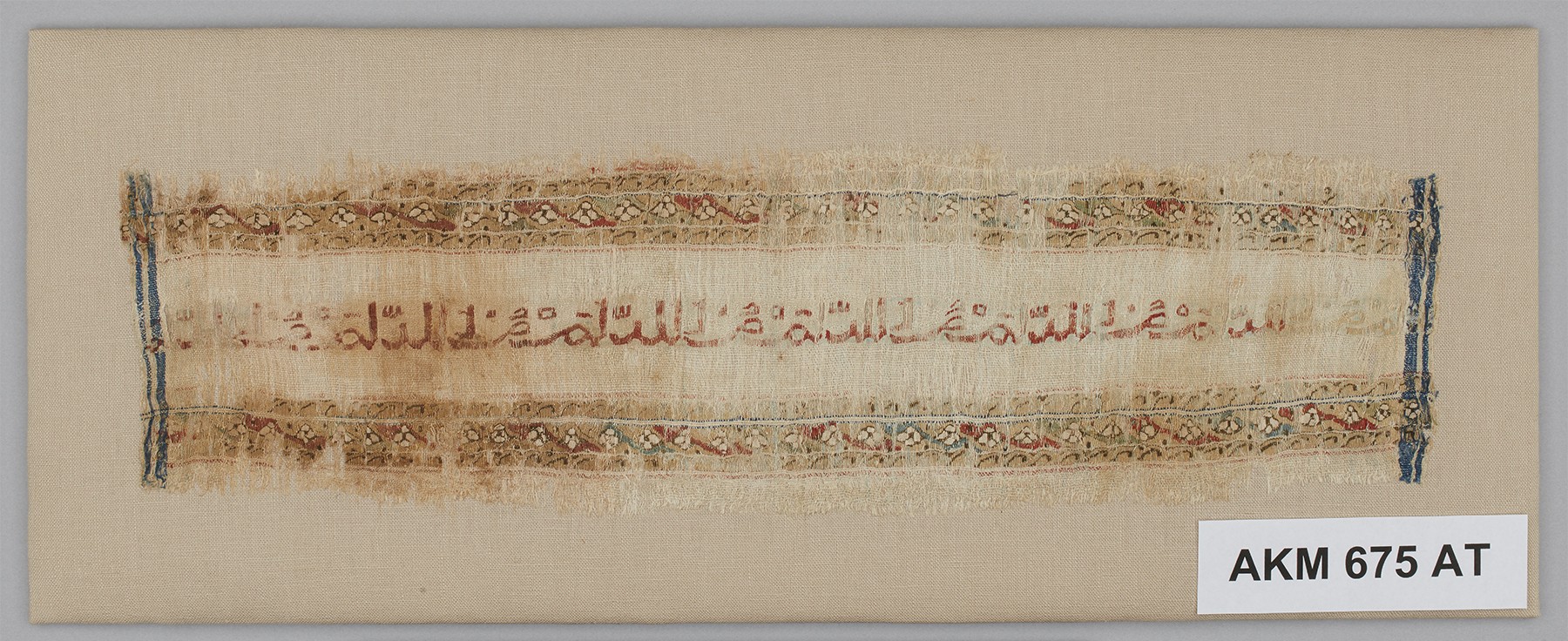Click on the image to zoom
Narrow tiraz panel with cursive inscription
- Accession Number:AKM675
- Place:Egypt
- Dimensions:11.2 x 40.2 cm
- Date:mid-12th century
- Materials and Technique:linen tabby; red, yellow, blue, black silk tapestry-woven decoration
This is a rare example of a complete textile artifact, with its two selvages (the edges that prevent the textile from unravelling) marked by two narrow blue stripes, and fringes along the top and bottom. Narrow in width and without the signs of deterioration found on most textiles excavated from burials in Egypt, it is too small to have been used as a shroud. Perhaps it was simply added to the burial to ensure blessings for the deceased.
Further Reading
Because it has an Arabic inscription, it is classified as a tiraz textile. Popular in Egypt during the 10th and 11th centuries, the term “tiraz,” which means “embroidery,” came to denote an inscription band as one sees on this textile (and on anything else, including architecture). This example in the Aga Khan Museum Collection represents a late development in the genre (see AKM304). Earlier in the Fatimid period, the inscription band invoked blessings on the Fatimid ruler and was often dated, even including the name of the factory and its supervisor. However, on this textile, the inscription invokes general blessings. Indeed, toward the end of the period, as caliphal power declined, inscribed textiles lost this connection with the Fatimid court.
Here, tapestry-woven borders frame the cursive inscription which extends through the middle of the undyed linen ground. These decorative borders are enclosed by leaf-scroll meanders, separated from the central band by three wefts: black, undyed linen, and black. The central band is composed of a trellis of alternating red, yellow, and pale blue strands, moving above and below white four-petal rosettes.
The inscription floats in the middle of the framed space. It is carefully executed in cursive (naskhi) script. [1] It includes diacritical markings, although their purpose seems more decorative than functional. Clearly recognizable is the shadda over the word Allah.
Inscription:
نصر من الله
Translation:
Victory from God. (repeated 6 times)
— Lisa Golombek
Notes
[1][ Compare with K. Otavsky and M.A.M. Salim, Mittelalterliche Textilien (Riggisberg, Switzerland: Abegg-Stifftung, 1995): no. 55, 93; no. 43, 81.
Note: This online resource is reviewed and updated on an ongoing basis. We are committed to improving this information and will revise and update knowledge about this object as it becomes available.


